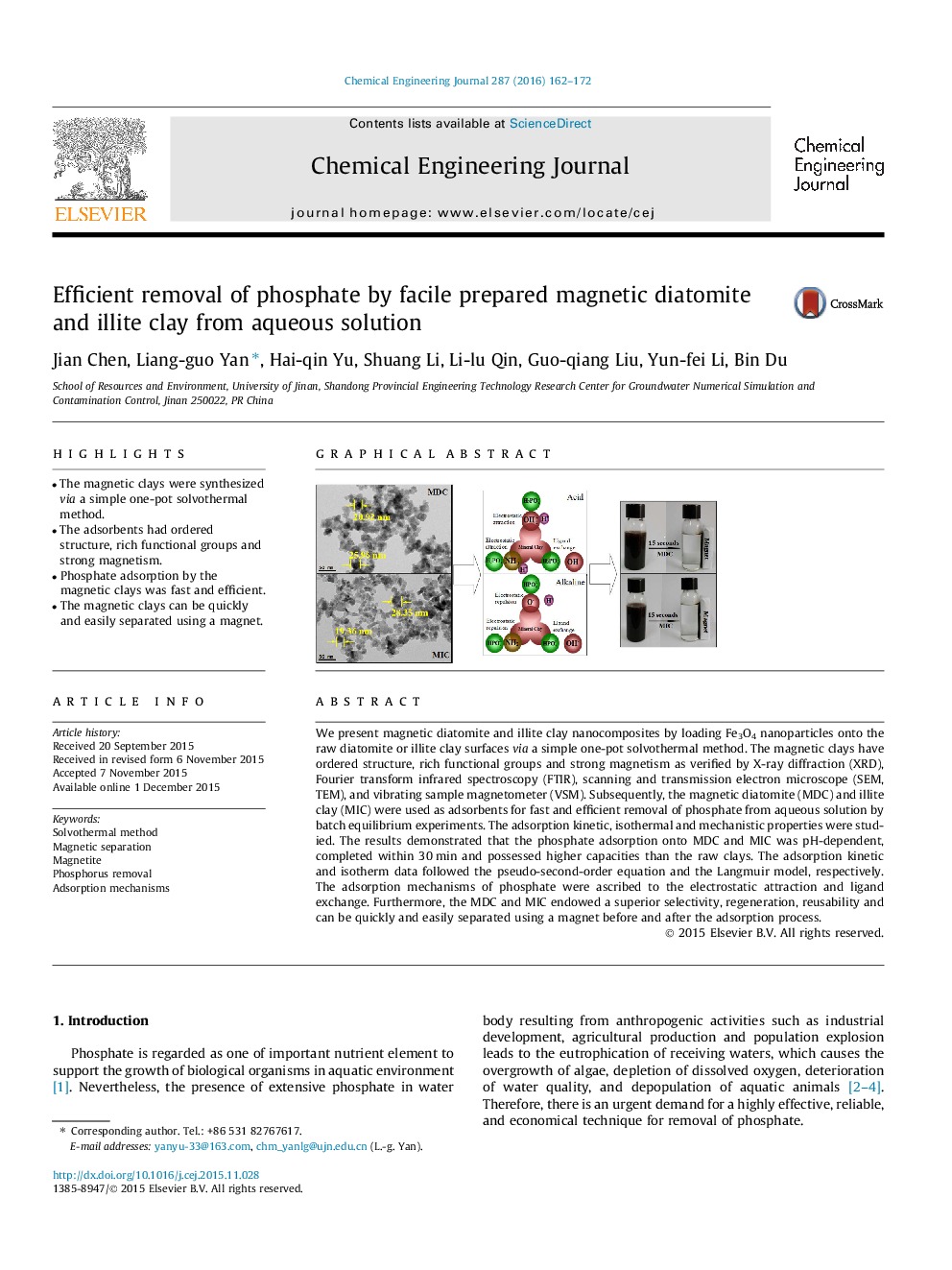| Article ID | Journal | Published Year | Pages | File Type |
|---|---|---|---|---|
| 145878 | Chemical Engineering Journal | 2016 | 11 Pages |
•The magnetic clays were synthesized via a simple one-pot solvothermal method.•The adsorbents had ordered structure, rich functional groups and strong magnetism.•Phosphate adsorption by the magnetic clays was fast and efficient.•The magnetic clays can be quickly and easily separated using a magnet.
We present magnetic diatomite and illite clay nanocomposites by loading Fe3O4 nanoparticles onto the raw diatomite or illite clay surfaces via a simple one-pot solvothermal method. The magnetic clays have ordered structure, rich functional groups and strong magnetism as verified by X-ray diffraction (XRD), Fourier transform infrared spectroscopy (FTIR), scanning and transmission electron microscope (SEM, TEM), and vibrating sample magnetometer (VSM). Subsequently, the magnetic diatomite (MDC) and illite clay (MIC) were used as adsorbents for fast and efficient removal of phosphate from aqueous solution by batch equilibrium experiments. The adsorption kinetic, isothermal and mechanistic properties were studied. The results demonstrated that the phosphate adsorption onto MDC and MIC was pH-dependent, completed within 30 min and possessed higher capacities than the raw clays. The adsorption kinetic and isotherm data followed the pseudo-second-order equation and the Langmuir model, respectively. The adsorption mechanisms of phosphate were ascribed to the electrostatic attraction and ligand exchange. Furthermore, the MDC and MIC endowed a superior selectivity, regeneration, reusability and can be quickly and easily separated using a magnet before and after the adsorption process.
Graphical abstractFigure optionsDownload full-size imageDownload as PowerPoint slide
